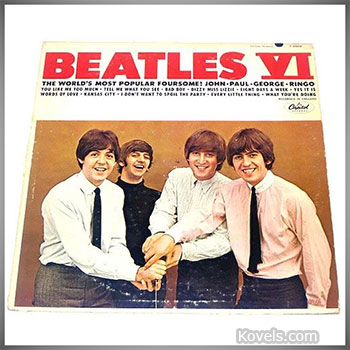Chances are, you are like many of us and have a box of old vinyl “golden oldie” records and albums in the back of a closet. Or, you may be interested in collecting them.
Here are 7 tips to get you started:
1. Forget about the easy listening, swing era big bands, opera, classical and show tunes records. Lawrence Welk, too. Sellers may each have a different focus, but most buyers look for jazz, pop, psychedelic, rock, new wave, blues and early country, mostly from the 1960s and later. Hip hop full lengths are harder to find than singles, also a good find. Check out record bins at thrift stores but what you see there is probably not what sells at a record store or online.
2. Understand grading. The condition of the record influences value. Most record collectors use the strict “Goldmine Standard” to grade condition. A reasonable universal grading system uses these guidelines:
(M) Mint – Perfect in every way. Record has never been played and is usually still sealed.
(NM) Near Mint – Opened; the record looks glossy and as if it has only been played a few times. There are no marks and the whole record package is complete.
(E) Excellent – Opened; Very light marks or small signs of use.
(VG+) Very Good Plus – Opened; has been played and might be a bit scuffed but has nothing major that affects sound. Cover shows some wear.
(VG) Very Good – Opened; has signs of use. You can still listen to it and enjoy it but is visually and audibly used.
(G) Good – Is actually closer to “not good.” Scuffs, scratches, slight warp, a skip here and there but listenable. A seller or buyer may not be interested or only at a bargain price.
(P) Poor – Warped, scratches, cracked. Listening is difficult – it skips, repeats.
3. Examine the record. Look at it from various angles under a good light. Is it glossy? Warped? Are there marks on the vinyl? Look for needle wear, scratches, bubbles or other defects caused by use or heat. Look at the label – is it scratched or marked? Make notes about faults for your description.
4. Spin the record on a turntable and check again for warping. Try to listen to it from start to finish or at least a few tracks. How does it sound? Make notes.
5. Collectors and sellers often grade the sleeve and the record separately. Look at the sleeve for damage, wear, rips, creases and dirt. A clean, damp cotton cloth and a clean soft white eraser may remove some grime and marks.
6. Do you have “extras” that might have come with the record – liner notes, lyric sheets, posters, photos? They are coveted by collectors. What is their condition?
7. The better the shape vinyl records and their packaging are in, the more desirable they are. So . . .
a. Store them vertically – don’t lay them flat; it causes warping.
b. Store them in a cool, dry place and avoid temperature extremes and humidity.
c. Keep them in their sleeves.
d. Use a storage container that can handle their weight.
The record album pictured here is “Beatles VI,” Capitol Records, 1965. It’s not “graded” but it plays well. It has some shallow scratches and the sleeve has rub marks and some tape. It sells for $40 online.




http://Www.Musicpriceguide.com
Are eBAy, Etsy and Amazon the only places to sell. Are there stores or organizations that would be interested in purchasing Vinyl Records?
I have first six Dylan albums, first press, won them in a radio contest; rarely played. Wondering about the value. Thanks.
I have all of the US Editions of the Beatles albums, all in covers, conditions range from good to very good; plus some singles, also in original covers; plus the UK version of the Beatles Collection, in case, never played, inclusions still in case.
I am interested in worth of collection.
I have 34 original LPs of the Elvis Presley album collection for sale. All albums are in near mint condition. All in original album covers, covers show some wear. Most have sleeves. None of the posters that came with some of the albums are included. Label colors are blue, orange and black.
A list of album titles can be supplied, if interested.
I have some 33’s that are very old, but playable. They are waltzes. purple or blue Victrola label
Promo records in some cases have a higher value than commercial copies, case being if its a popular artist like the beatles, a promo of less desirable artist will not, highest value promo would be a “promo only” version not available commercially
There is also true promo and promo stamped, true promo are factory made and have thd label on the record be either a plain white version of thier label or thier regular label printed with promo on it, stamped promo are only stamped promo on cover, these do not have any more value than the commercial version, need more info? Giovannyz@comcast.net , collector and seller over 20 years
I have 3 “Capital Records” “Nursery Rhymes” sung by Ken Carter from the “Sons of The Pioneers”. They are 10″ 78 RPM’s and are about 1945-50 unbreakable vinyl.
Can somebody give me a price, they are in “good” shape and have been used for three children, from 1945-50.
Thanks! Daryl Wynn (dwynndad@msn.com)
I have a vinyl record collection of approximately 1000 LP’s. Literally 90% of collection are DEMO/PROMO/DJ COPY/ MARKED NOT FOR SALE, etc. I would say somewhere in the neighborhood of 80% of these LP’s have never been on a turntable/never played. They span from 1968 to 1983/4. All of it old blues/jazz, rock and roll, old country. Does PROMO COPY increase their value? Thanks